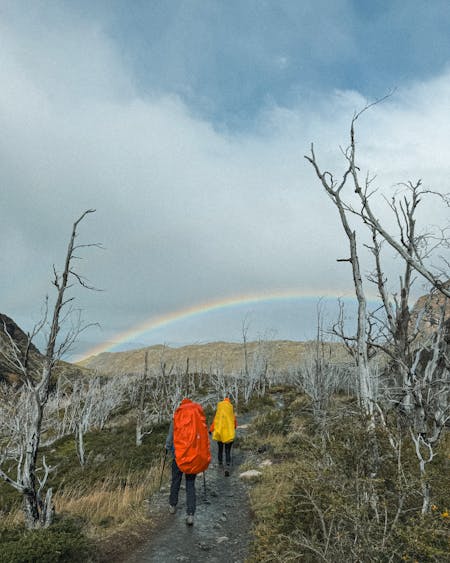
Rainy weather can be a bit of a downer for many outdoor adventurers, but it doesn’t have to stop you from enjoying your hike. With the right attitude and preparation, wet weather can add a whole new dimension to your hiking experience. Whether you’re a seasoned hiker or a weekend wanderer, learning how to hike in the rain not only improves your skills but can lead to some pretty memorable moments on the trail. As a hiker who started hiking in their late teens, I’ve experienced a few wet days on the track.
I recently completed a long day hike and despite the weather forcast not predicting rain, the heavens opened up after lunch and the rainstorm followed us all the way to the finish of our hike.
The track turned into a stream and my waterproof boots became a foot spa, filled with water. Was it comfortable? No, but I survived and had a greater appreciation for my hot bath and warm, dry home.
My hiking in the rain guide offers tips and hacks to help you stay comfortable and safe when the skies open up on your next hike. Let’s dive right in and discover my wet weather tips.
Attitude Matters: Embrace the Rain
Let’s start with the most important thing—your mindset. Sure, we all love a sunny day on the trail, but the rain can bring a refreshing change. It’s part of the adventure and offers variety that makes hiking exciting. Rain can create magical moments like rainbows and bring a fresh, earthy smell to the forest. If you’re prepared, you might even find yourself enjoying the rain as it also offers moody and dramatic photos. And remember, some of the most stunning trails in places like Tasmania and New Zealand wouldn’t be what they are without the rain!
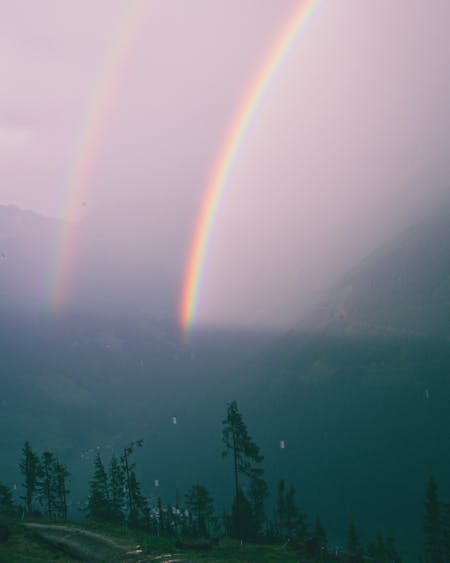
Waterproof Your Gear
One of the best ways to stay comfortable in wet weather is keeping your gear dry. Use dry bags or sacks inside your backpack to keep your clothing, food, and electronics safe. Waterproof pack liners are also a great option. If the forecast predicts heavy rain, consider packing a rain cover for your backpack. The goal is to ensure that no matter how bad the weather gets, your dry clothes and essential items stay dry. Dry gear is especially crucial in colder conditions to avoid the risk of hypothermia.
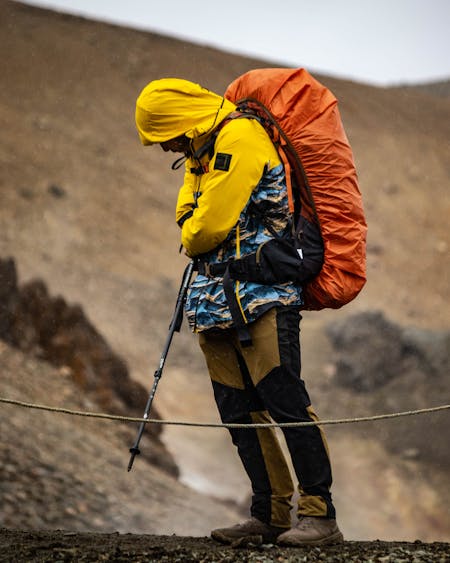
Good Rain Gear is a Must
You don’t need to break the bank to get great rain gear, but it’s worth investing in some good-quality waterproof, breathable clothing. A breathable rain jacket is essential to prevent sweat from building up inside while still keeping the rain out. Avoid heavy jackets that trap heat and moisture; look for lightweight, breathable options that let your skin breathe. Features like pit zips are great for venting on warm, rainy days. My preference is a ponch as it’s lightweight open at the sides which allows for ventilation.

Tip: Don’t forget a peaked cap under your hood to keep water from dripping down your face and into your jacket. Another tip is to use a foldback clip to hold the hood of your jacket onto the peak of your cap.

Footwear: Waterproof Shoes vs. Trail Runners
When it comes to your feet, waterproof shoes are a good option for keeping water out, but they do tend to hold water in if you step in a deep creek. Trail runners, on the other hand, dry faster but might not offer as much ankle support as boots. Consider your hiking conditions, remembering that wet tracks can be slippery, and pick the right footwear for the job. And, as always, bring extra socks! Wet feet can lead to blisters, so having a dry pair to change into can make a huge difference in your comfort.
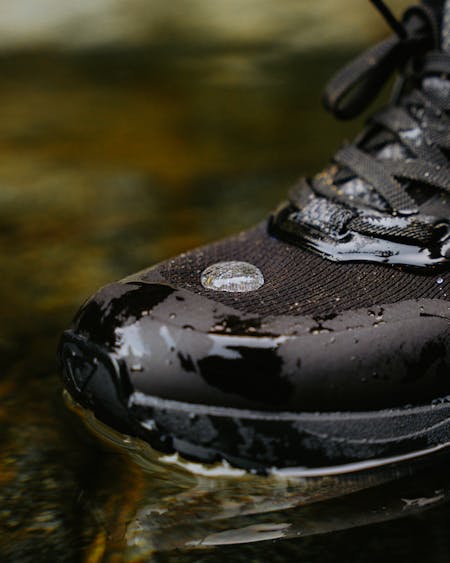
Choose Your Trail Wisely
Some trails are just better suited for rainy days than others. For example, avoid trails with steep sections or ones that are prone to flooding during heavy rain. If you’re hiking in an area where creeks and rivers are common, plan ahead and make sure you’re prepared to cross them safely. Sometimes, skipping a high point when visibility is low or when conditions are unsafe is the best choice. Don’t hike just to check off a summit if you won’t be able to enjoy the view!
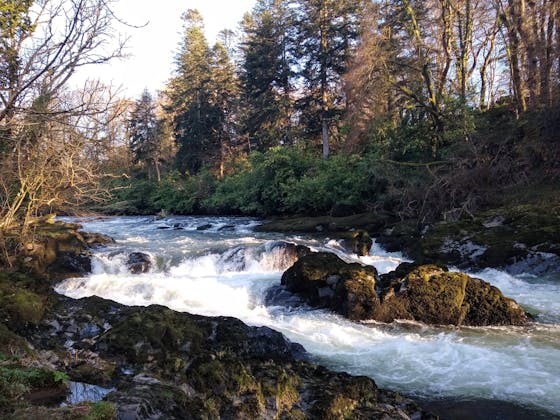
Food and Snacks
In cold, rainy conditions, hiking can sap your energy quickly, so it’s important to keep your fuel up. Pack high-calorie, easy-to-eat snacks and meals that don’t require cooking, as cooking in the rain can be a hassle. Snacks like dried fruit and nuts can be stored in ziplock bags, helping to keep them protected from water. They can easily be stored in your pockets so you don’t have to remove your pack with its waterproof cover to access them.
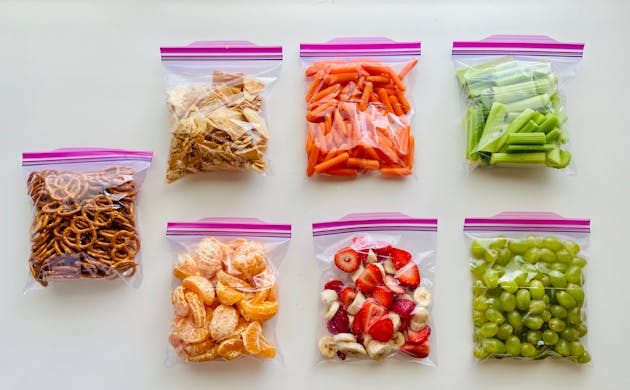
Layering is Key
Layering is crucial when hiking in the rain. Make sure you have a good layering system that includes moisture-wicking base layers, insulating mid-layers, and waterproof, breathable outer layers. Wool and synthetic fabrics are better than down in wet conditions. And remember, always keep a dry layer forchanging into after your hike.
Quick-Drying Clothing and Gear
When it’s raining, you want your clothing to dry quickly and still be breathable. Choose lightweight, moisture-wicking fabrics that will keep you comfortable both in the rain and in drier conditions. And when it comes to drying off, microfibre towels are your best friend—they’re lightweight, compact, and absorb water efficiently, so you can dry off quickly after a rain shower.
Keep Electronics Safe
Rain can be hard on electronics, so be sure to pack zip lock bags or dry sacks for your phone, camera, and other electronic gear. If you’re using a GPS or a phone for navigation, make sure they stay dry to avoid water damage.
When in Doubt, Call It Quits
Not every rainy day hike is meant to be completed, and that’s okay. Sometimes the weather can turn extreme, and if conditions become unsafe, it’s best to call it a day or cancel before you start. Hike smart, not hard, and prioritize your safety and comfort.
Rainy days don’t have to be a dealbreaker for your hiking plans. In fact, some of the best memories and experiences can come from embracing the challenge of hiking in the rain. With the right gear, attitude, and a little preparation, you can make the most of your time outdoors, no matter what the weather throws your way. So next time the forecast predicts rain, gear up and go for it! Happy hiking!
Have you had any wet weather hiking experiences? Please share them here.
